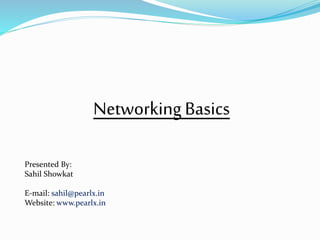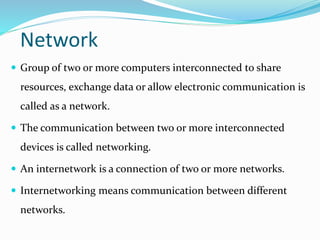This document provides an overview of computer networking concepts. It defines a network as connecting two or more computers to share resources. Networks allow simultaneous access to data, data sharing, personal communication, hardware sharing, and easier data backup. The main types of networks are LAN, MAN, and WAN. Network operating systems like peer-to-peer and client/server control software and hardware. Common network topologies include bus, star, tree, ring, and mesh. Wired and wireless media transmit data. Networking devices include network interface cards, repeaters, hubs, bridges, switches, and routers.




















































